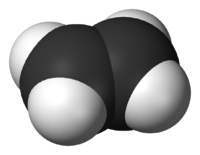
A New Bias Site for Epigenetic Modifications: How Non‐Canonical GC Base Pairs Favor Mechanochemical Cleavage of DNA
Sign Up to like & getrecommendations! Published in 2020 at "BioEssays"
DOI: 10.1002/bies.202000051
Abstract: Properties of non‐canonical GC base pairs and their relations with mechanochemical cleavage of DNA are analyzed. A hypothesis of the involvement of the transient GC wobble base pairs both in the mechanisms of the mechanochemical… read more here.
Keywords: base pairs; non canonical; base; cleavage dna ... See more keywords

Understanding the role of non‐Watson‐Crick base pairs in DNA–protein recognition: Structural and energetic aspects using crystallographic database analysis and quantum chemical calculation
Sign Up to like & getrecommendations! Published in 2022 at "Biopolymers"
DOI: 10.1002/bip.23492
Abstract: Specific recognition of DNA base sequences by proteins is vital for life‐cycles of all organisms. In a large number of crystal structures of protein–DNA complexes, DNA conformation significantly deviates from the canonical B‐DNA structure. A… read more here.
Keywords: dna; base pairs; canonical base; non canonical ... See more keywords

On the Enzymatic Formation of Metal Base Pairs with Thiolated and pKa‐Perturbed Nucleotides
Sign Up to like & getrecommendations! Published in 2019 at "ChemBioChem"
DOI: 10.1002/cbic.201900399
Abstract: The formation of artificial metal base pairs is an alluring and versatile method for the functionalization of nucleic acids. Access to DNA functionalized with metal base pairs is granted mainly by solid‐phase synthesis. An alternative,… read more here.
Keywords: base pairs; base; metal base; thiolated pka ... See more keywords

Atomistic mechanisms of the tautomerization of the G·C base pairs through the proton transfer: quantum-chemical survey
Sign Up to like & getrecommendations! Published in 2021 at "Journal of Molecular Modeling"
DOI: 10.1007/s00894-021-04988-7
Abstract: This study is devoted to the investigation of the G·C*tO2(WC)↔G*NH3·C*t(WC), G·C*O2(WC)↔G*NH3·C*(WC) and G*·C*O2(WC)↔G*NH3·C(wWC)↓ tautomerization reactions occurring through the proton transfer, obtained at the MP2/6-311++G(2df,pd)//B3LYP/6-311++G(d,p) level of theory in gas phase under normal conditions (‘WC’ means… read more here.
Keywords: base pairs; proton transfer; nh3 nh3; base ... See more keywords

Nucleic acid duplexes with metal-mediated base pairs and their structures
Sign Up to like & getrecommendations! Published in 2019 at "Coordination Chemistry Reviews"
DOI: 10.1016/j.ccr.2019.05.007
Abstract: Abstract Metal-mediated base pairs represent a topical area of research at the border of bioinorganic chemistry, supramolecular coordination chemistry and DNA nanotechnology. In a metal-mediated base pair, the hydrogen bonds of a canonical base pair… read more here.
Keywords: metal mediated; mediated base; base; chemistry ... See more keywords

Multi-copper incorporation into ring-expanded base pairs: An ab initio study
Sign Up to like & getrecommendations! Published in 2019 at "Chemical Physics Letters"
DOI: 10.1016/j.cplett.2019.136704
Abstract: Abstract In this work, we design four multi-copper-mediated ring-expanded base pairs, which possess improved electromagnetic properties due to the introduction of cyclopentadienyl radicals and copper ions. These designed base pairs have smaller HOMO-LUMO gaps and… read more here.
Keywords: multi copper; expanded base; base; base pairs ... See more keywords

Light-induced formation of silver(I)-mediated base pairs in DNA: Possibilities and limitations
Sign Up to like & getrecommendations! Published in 2020 at "Inorganica Chimica Acta"
DOI: 10.1016/j.ica.2020.119856
Abstract: Abstract The applicability of the caged nucleoside CNPP (2′-deoxycytidine bearing an ortho-nitrophenylpropyl group at the exocyclic N4 position) in the light-triggered formation of three silver(I)-mediated base pairs was probed, namely C–Ag(I)–C, Im–Ag(I)–C and P–Ag(I)–C (Im = imidazole… read more here.
Keywords: mediated base; silver mediated; formation; base pairs ... See more keywords

The effect of oxygen vacancies on the coordinatively unsaturated Al-O acid-base pairs for propane dehydrogenation
Sign Up to like & getrecommendations! Published in 2021 at "Journal of Catalysis"
DOI: 10.1016/j.jcat.2021.03.033
Abstract: Abstract Recently, the coordinatively unsaturated metal-O Lewis acid−base pairs of metal oxides are found to be able to activate the C–H bond of light alkane efficiently. For the inert crystal Al2O3, we found that the… read more here.
Keywords: acid base; propane dehydrogenation; coordinatively unsaturated; oxygen ... See more keywords

Towards the enzymatic formation of artificial metal base pairs with a carboxy-imidazole-modified nucleotide.
Sign Up to like & getrecommendations! Published in 2019 at "Journal of inorganic biochemistry"
DOI: 10.1016/j.jinorgbio.2018.11.009
Abstract: The identification of synthetic nucleotides that sustain the formation of orthogonal, unnatural base pairs is an important goal in synthetic biology. Such artificial synthons have been used for the generation of semi-synthetic organisms as well… read more here.
Keywords: formation artificial; metal base; metal; base pairs ... See more keywords

Direct evidence for (G)O6···H2-N4(C)+ hydrogen bonding in transient G(syn)-C+ and G(syn)-m5C+ Hoogsteen base pairs in duplex DNA from cytosine amino nitrogen off-resonance R1ρ relaxation dispersion measurements.
Sign Up to like & getrecommendations! Published in 2019 at "Journal of magnetic resonance"
DOI: 10.1016/j.jmr.2019.106589
Abstract: NMR relaxation dispersion studies have shown that Watson-Crick G-C and A-T base pairs in duplex DNA exist in dynamic equilibrium with their Hoogsteen counterparts. Hoogsteen base pairs form through concurrent rotation of the purine base… read more here.
Keywords: relaxation dispersion; syn; base pairs; base ... See more keywords

Modulating RNA secondary and tertiary structures by mismatch binding ligands.
Sign Up to like & getrecommendations! Published in 2019 at "Methods"
DOI: 10.1016/j.ymeth.2019.05.006
Abstract: Much recent attention has been focused on small organic molecules binding to non-canonical structures of nucleic acids, especially, RNA. The Human Genome Project and the ENCODE (encyclopedia of DNA elements) project revealed that more than… read more here.
Keywords: binding ligands; molecules binding; dna; base pairs ... See more keywords